Abstract
Abilities of isolate AF-W1 of Fusarium solani to degrade the side chain and the ring structure of synthetic dehydrogenative polymerizates, aromatic acids, or lignin in sound wood were investigated under several conditions of growth substrate or basal medium and pH. Significant transformations of lignins occurred in 50 days in both unextracted and extracted sound wood substrates with 3% malt as the growth substrate and the pH buffered initially at 4.0 with 2,2-dimethylsuccinate. Degradation of lignin in such woods also occurred under unbuffered pH conditions when a basal medium of either 3% malt or powdered cellulose in deionized water was present. Decomposition of the lignin in these woods did not occur in cultures where d-glucose was present as a growth substrate. F. solani significantly transformed, as measured as evolved 14CO2, both synthetic side chain (β, γ)-14C- and U-ring-14C-labeled lignins in 30 days under liquid culture conditions of only distilled deionized water and no pH adjustment. Degradation of dehydrogenative polymerizates by F. solani was reduced drastically when D2 was the liquid medium. AF-W1 also cleaved the α-14C from p-hydroxybenzoic acid and evolved 14CO2 from the substrate, [3-14C]cinnamic acid. Thus, the fungus cleaved side chain carbon from substrate that originally lacked hydroxyl substitution on the aromatic nucleus. Surprisingly, small amounts of 14C cleaved from aromatic acids by F. solani were incorporated into cell mass. Initial buffering of the culture medium to pH 4.0 or 5.0 with 0.1 M 2,2-dimethylsuccinate significantly increased F. solani degradation of all lignins or aromatic acids. Results indicated that AF-W1 used lignin as a sole carbon source.
Full text
PDF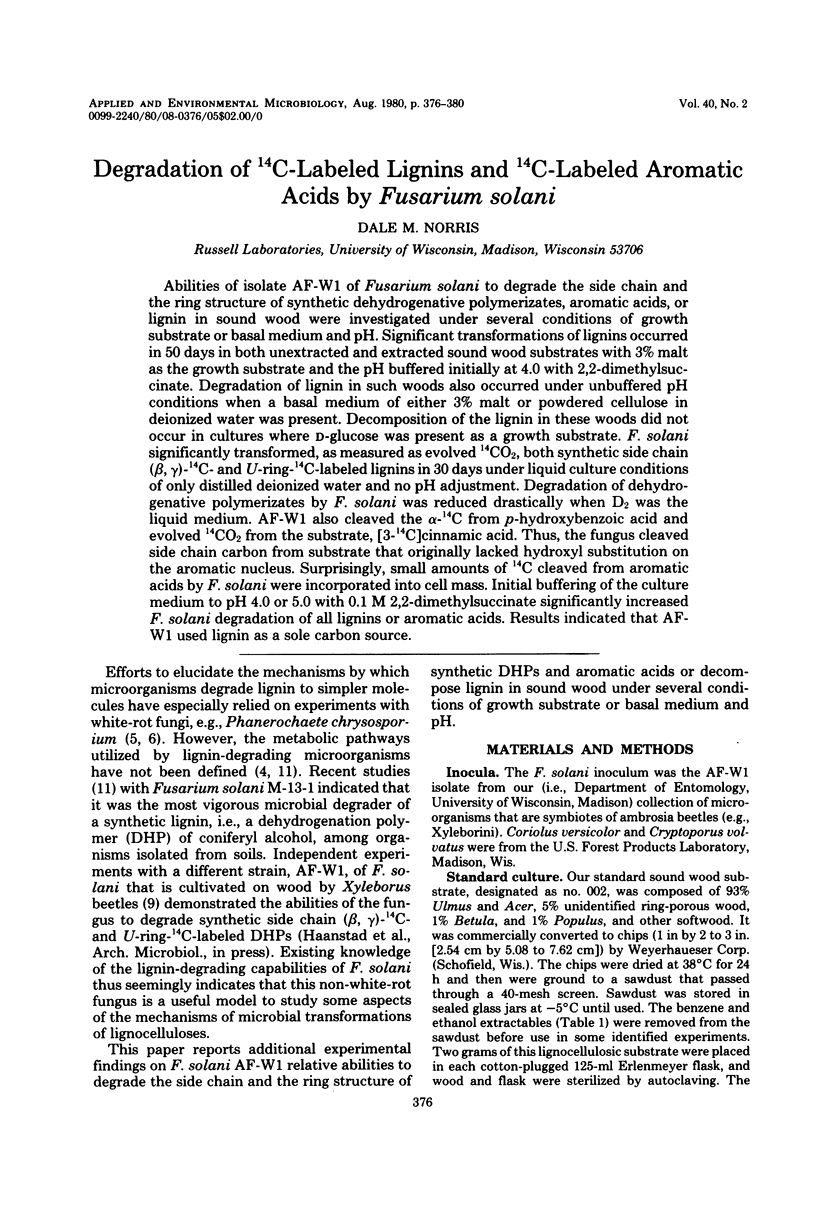
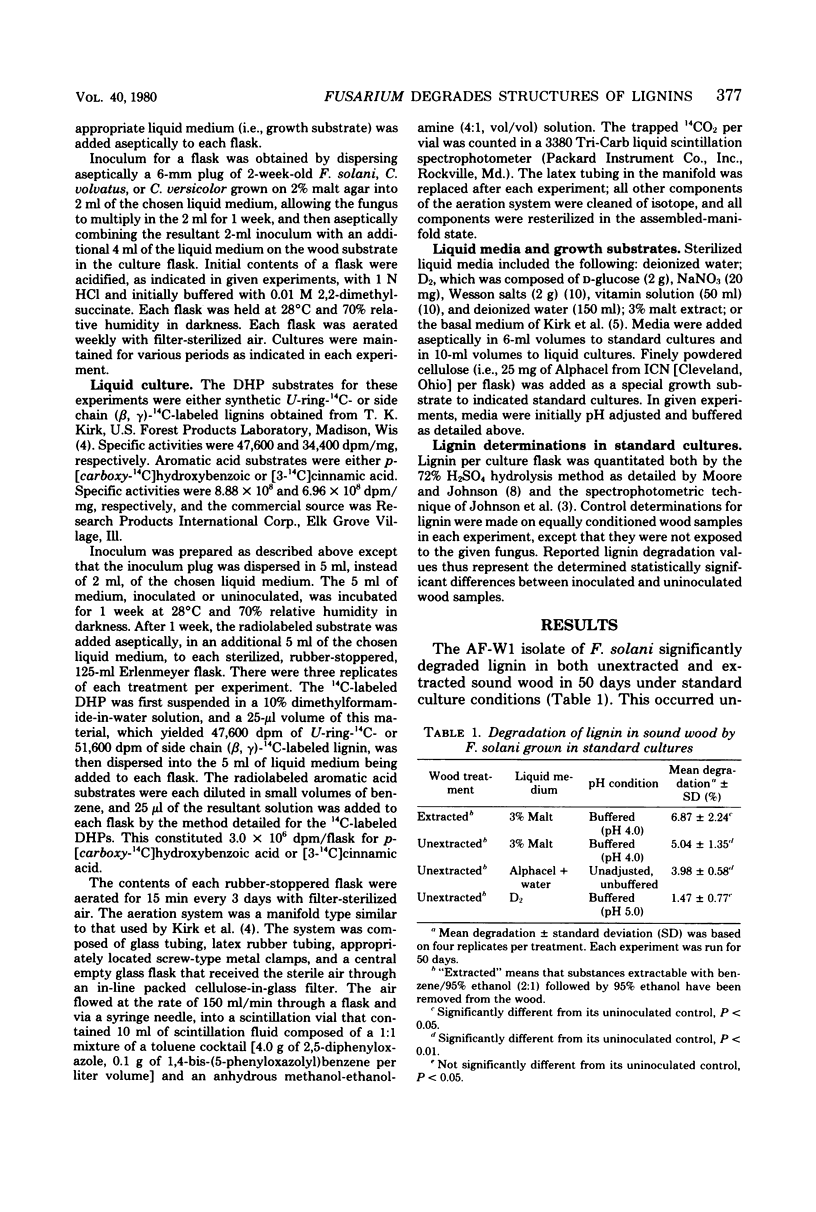
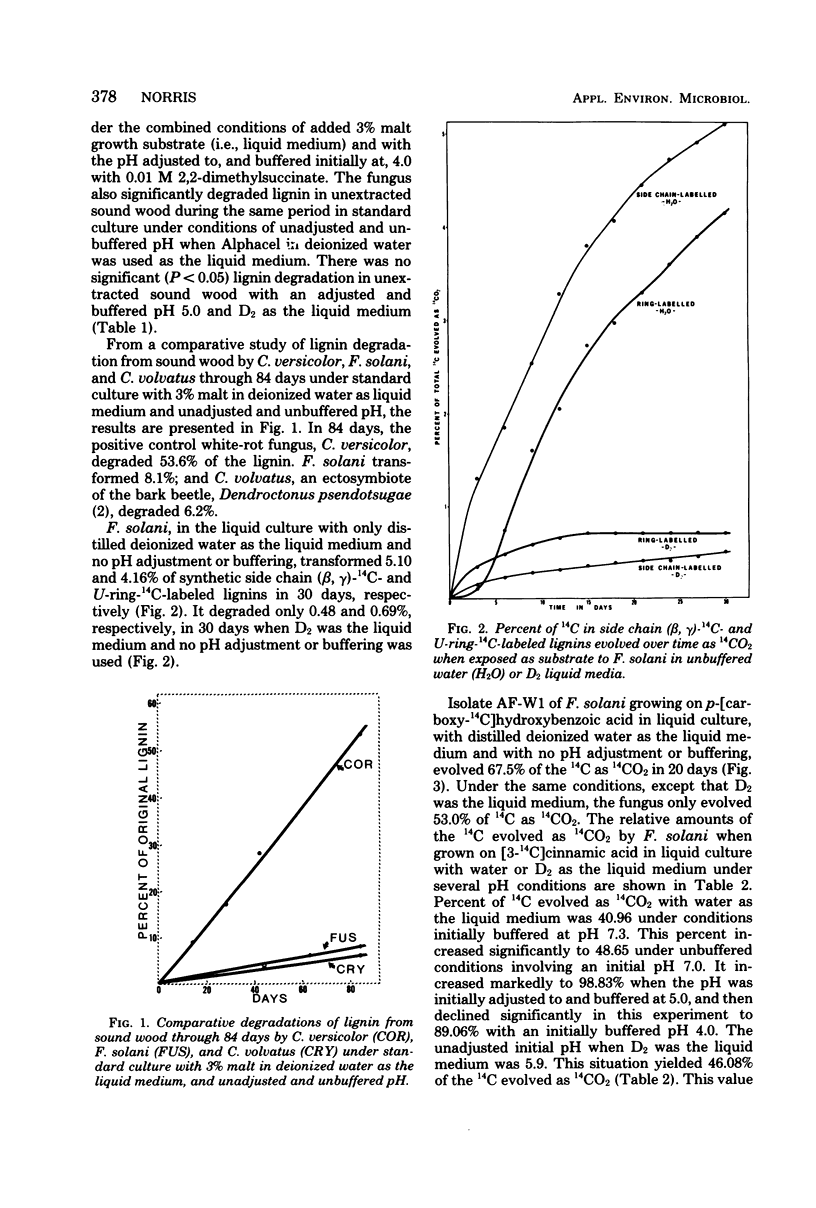
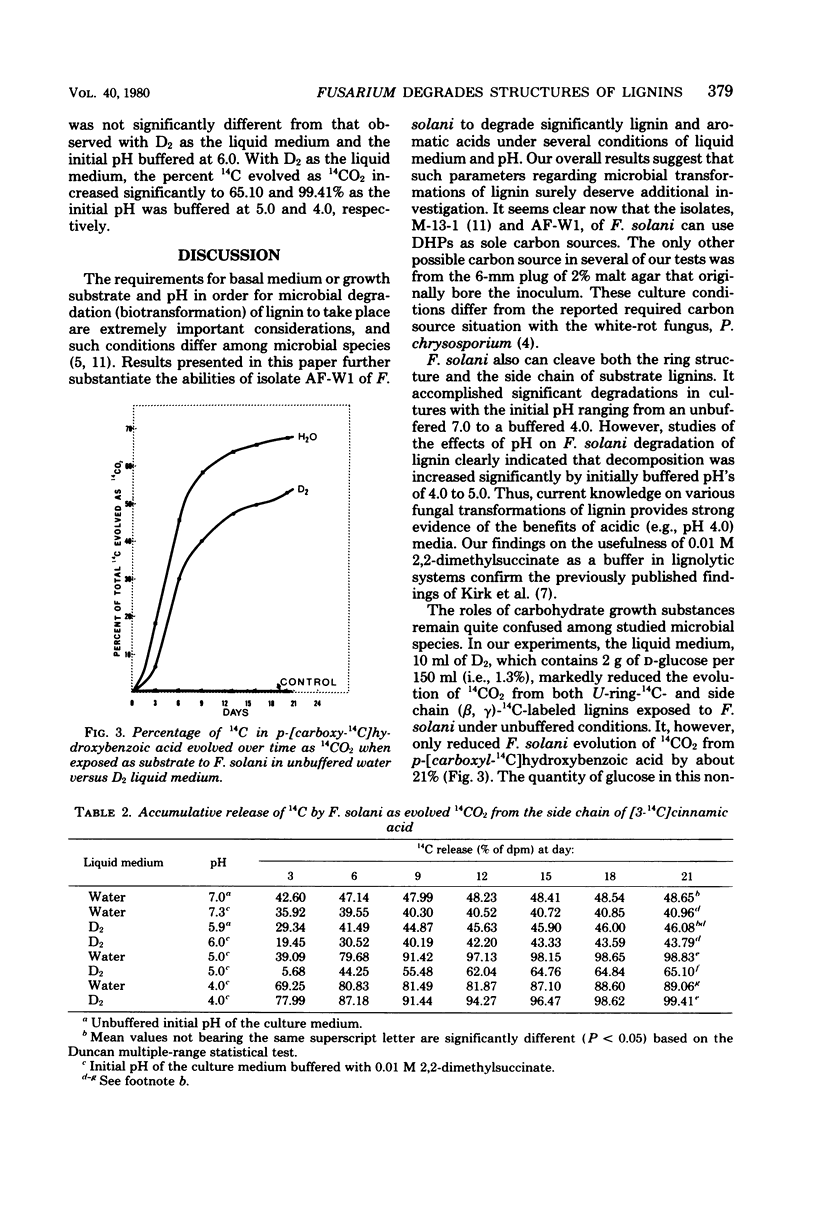
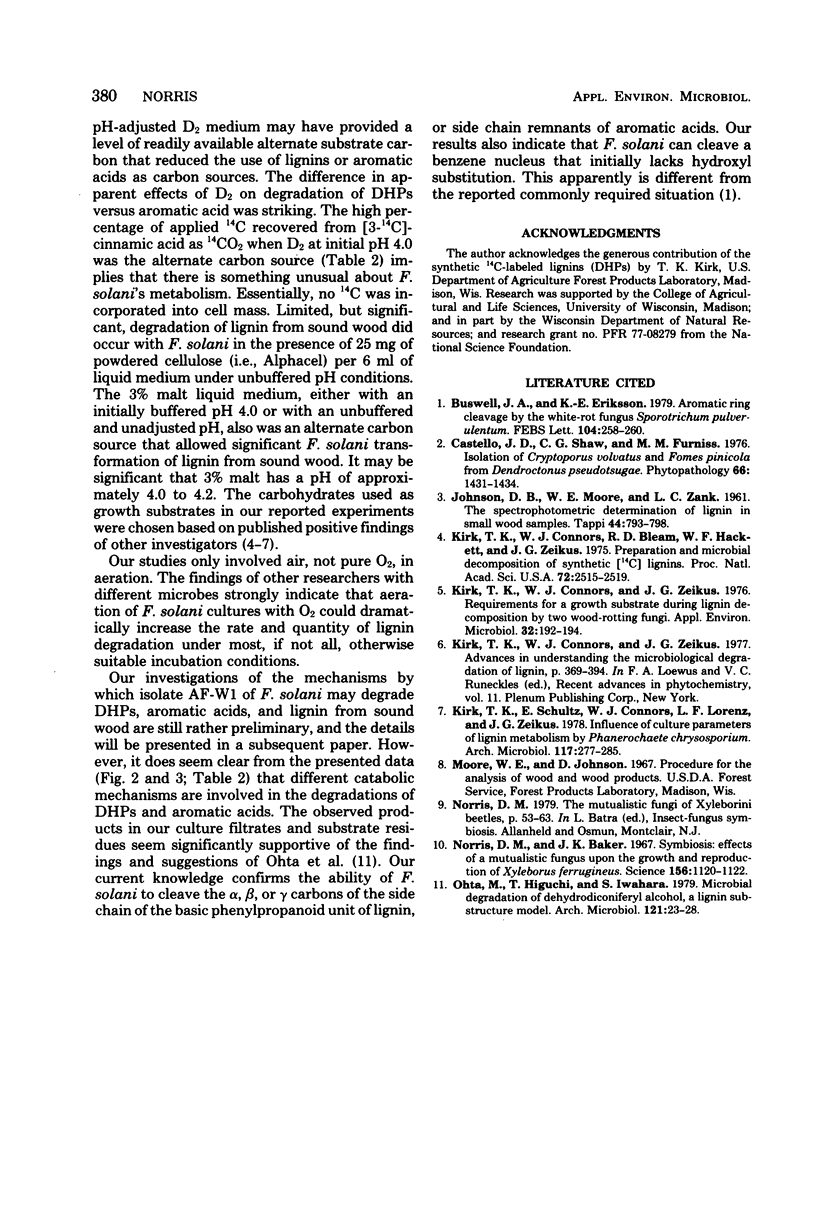
Selected References
These references are in PubMed. This may not be the complete list of references from this article.
- Kirk T. K., Connors W. J., Bleam R. D., Hackett W. F., Zeikus J. G. Preparation and microbial decomposition of synthetic [14C]ligins. Proc Natl Acad Sci U S A. 1975 Jul;72(7):2515–2519. doi: 10.1073/pnas.72.7.2515. [DOI] [PMC free article] [PubMed] [Google Scholar]
- Kirk T. K., Connors W. J., Zeikus J. G. Requirement for a growth substrate during lignin decomposition by two wood-rotting fungi. Appl Environ Microbiol. 1976 Jul;32(1):192–194. doi: 10.1128/aem.32.1.192-194.1976. [DOI] [PMC free article] [PubMed] [Google Scholar]
- Norris D. M., Baker J. K. Symbiosis: effects of a mutualistic fungus upon the growth and reproduction of Xyleborus ferrugineus. Science. 1967 May 26;156(3778):1120–1122. doi: 10.1126/science.156.3778.1120. [DOI] [PubMed] [Google Scholar]


